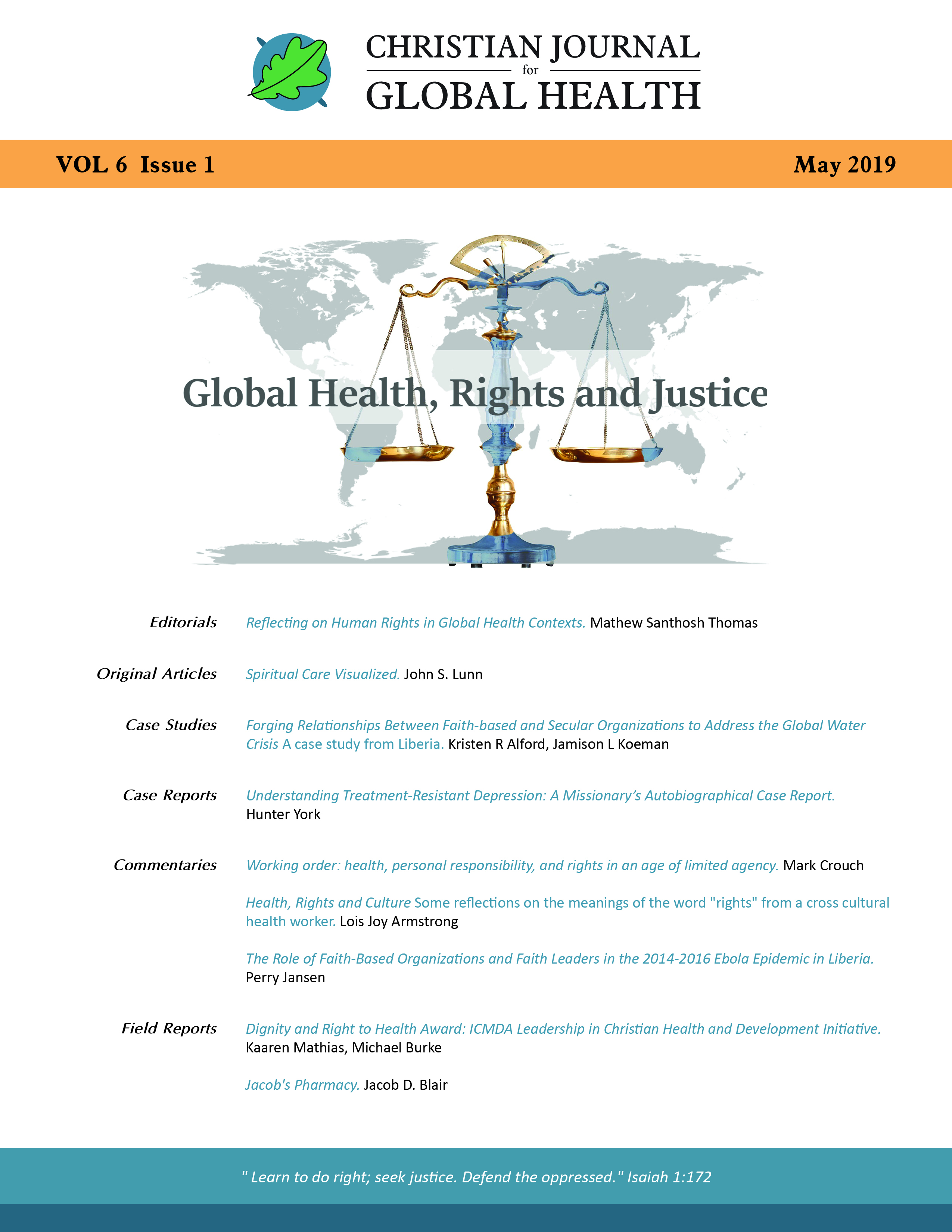Critical Thinking in Medical Education Missions
DOI:
https://doi.org/10.15566/cjgh.v6i1.289Keywords:
medical education, critical thinking, cross-cultural trainingAbstract
Critical thinking, an essential skill for the transformation of medical knowledge into practice, should be a key component of medical education, even in cross-cultural training situations. Critical thinking is the use of purposeful, self-regulatory judgment which results in interpretation, analysis, evaluation, and inference as well as the explanation of the evidential, conceptual, methodological, criteriological, or contextual considerations upon which that judgment was based. Critical thinking is important because the healthcare workplace and the science on which healthcare is based continue to advance and evolve. Those who teach healthcare cross-culturally may experience challenges in teaching critical thinking to cross-cultural learners, challenges in the areas of language/communication, cultural differences, customary education approach, and educator factors. The challenges may be identified, addressed, and overcome. Tangible means of implementing training in critical thinking include the use of questions and discussions during educational sessions as well as structured systems for reflecting on causes and treatment of medical conditions.
References
Facione PA. Critical thinking: A statement of expert consensus for purposes of educational assessment and instruction. Research findings and recommendations. Millbrae, CA. The California Academic Press (ERIC Doc. No. ED 315 423), 1990, page 2.
Jacobs, P., Ott, B., Ulrich, Y., & Short, L. An approach to defining and operationalizing critical thinking. J Nursing Education 1997;36:19-22.
Facione NC. Critical thinking and clinical judgment: Goals 2000 for nursing science. Paper presented at the annual meeting of the Western institute of Nursing, San Diego, CA, 1995.
Scheffer BK, Rubenfeld MG. A consensus statement on critical thinking in nursing. J Nursing Education 2000;39:352-359.
Alfaro-Lefevre R. Critical thinking, clinical reasoning, and clinical judgment: A practical approach, 6th ed. Philadelphia, Elsevier, 2017.
Baydak A, et al. Interaction of Language and Culture in the Process of International Education. Social Behavior Sci, 2015;215:14-18.
Dhaliwal G. Teaching medicine to non-English speaking background learners in a foreign country. J Gen Intern Med 2009;24(6):771-3.
Bovill C, et al. Transnational approaches to teaching and learning in higher education: challenges and possible guiding principles. Teaching Higher Education, 2015;20(1):12-23.
Strand M. Teaching creative-thinking skills in a Confucist context. Colorado Springs: CSOF Medical Monographs, 1998.
Gopal A. Internationalization of Higher Education: Preparing faculty to teach cross-culturally. International J Teaching Learning Higher Education 2011;23(3):373-381.
Wolpaw D, Papp K. SNAPPS: a learner-centered model for outpatient education. Academic Medicine 2003;78:893-898.
McLaughlin E, Pfister A. Equipping African medical students with ethical decision – making skills: A case – based method. Christian J Global Health 2018; 5(3):23-28. https://doi.org/10.15566/cjgh.v5i3.229
Gurpreet D. Teaching Medicine to Non-English Speaking Background Learners in a Foreign Country J Gen Intern Med 2009;24(6):771–773.
Published
How to Cite
Issue
Section
License
Christian Journal for Global Health applies the Creative Commons Attribution License to all articles that we publish. Under this license, authors retain ownership of copyright for their articles or they can transfer copyright to their institution, but authors allow anyone without permission to copy, distribute, transmit, and/or adapt articles, even for commercial purposes so long as the original authors and Christian Journal for Global Health are appropriately cited.
This work is licensed under a Creative Commons Attribution 4.0 International License.







40.jpg)

.jpg)
1.jpg)
